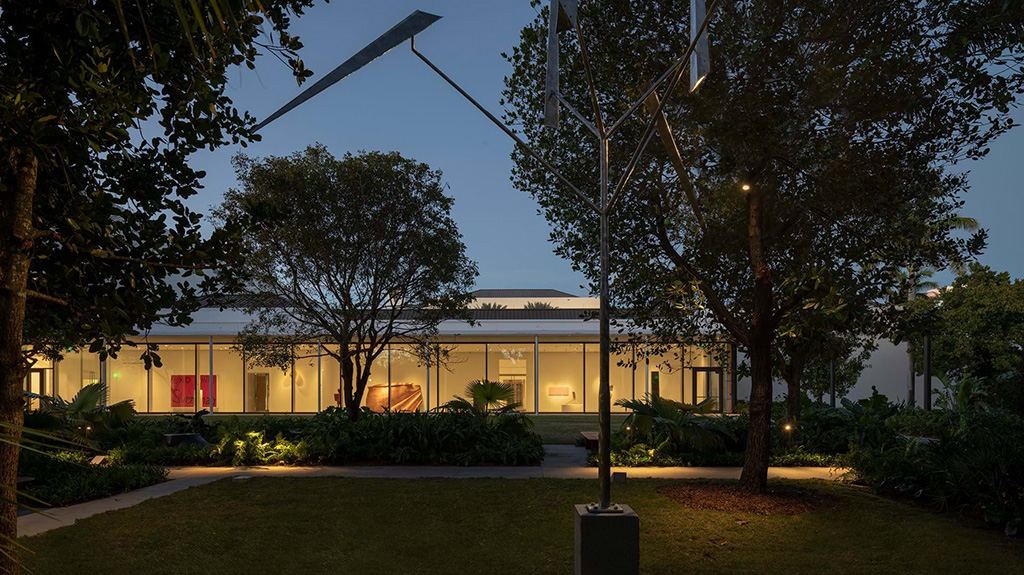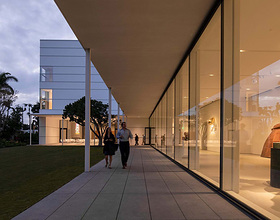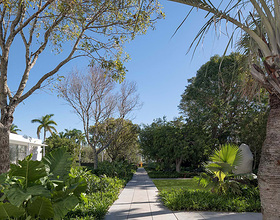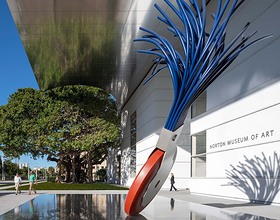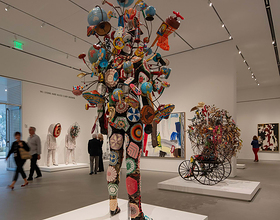NORTON MUSEUM OF ART
The Norton Museum of Art in West Palm Beach was built in 1941 to house the art collection of the industrialist Ralph Hubbard Norton and his wife, Elizabeth. The museum was laid out by the architect Marion Sims Wyeth as an elegant series of Art Deco inspired single storey pavilions around a central courtyard.
Subsequent expansion has broken the symmetry of the original arrangement, and the creation of an additional car park to the south of the museum has led to the relocation of the main entrance from South Olive Avenue to the side of the building.
The new masterplan restores the logic of Wyeth’s plan, reasserting the clarity of the main axis, balancing the different building heights and providing flexible, welcoming visitor facilities to attract a wider local and international audience.
The project aims to transform the existing assemblage of buildings into a world-class cultural destination within a sub-tropical garden setting. A new street frontage on South Dixie Highway to the west redefines the museum’s relationship with the city and reasserts the main entrance on the central axis – visitors will once again be able to see through the building via a new, transparent entrance lobby and refurbished glass and iron courtyard doors.
The new entrance is signalled by three new double-height pavilions, which mediate between the low-rise galleries and three-storey Nessel Wing and unify the whole composition with a shared materials palette of white stone. The pavilions house a state-of-the-art auditorium and event space and are unified beneath a metal roof canopy, which projects to shade the entrance plaza and shelter visitors from sub-tropical rains. Taking advantage of the wonderful Florida climate from October to April, the landscaping of the gardens and central courtyard incorporates native trees and flowers to provide shaded walkways, and the former parking lot is transformed into a sculpture lawn. The design also includes a new museum shop and a new restaurant with al-fresco garden seating which, like the new pavilion spaces, can operate independently of the museum to activate the campus throughout the day and at night.
Photo credits: Foster + Partners
1870 Projects

